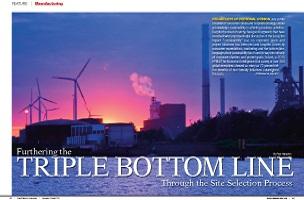
 Regardless of personal opinion, any astute observer of consumer culture and corporate strategy should acknowledge sustainability is affecting business activities. Despite the cloud of catchy, feel-good buzzwords that have overshadowed any meaningful discussion of the issue, the impact “sustainability” has on corporate goals and project initiatives has been real and tangible. Driven by consumer expectations, marketing and the bottom line, language about sustainability has found its way into virtually all corporate charters and project goals. In fact, a 2010 KPMG/The Economist Intelligence Unit survey of over 350 global executives showed as many as 72 percent felt the benefits of eco-friendly initiatives outweighed the costs.
Regardless of personal opinion, any astute observer of consumer culture and corporate strategy should acknowledge sustainability is affecting business activities. Despite the cloud of catchy, feel-good buzzwords that have overshadowed any meaningful discussion of the issue, the impact “sustainability” has on corporate goals and project initiatives has been real and tangible. Driven by consumer expectations, marketing and the bottom line, language about sustainability has found its way into virtually all corporate charters and project goals. In fact, a 2010 KPMG/The Economist Intelligence Unit survey of over 350 global executives showed as many as 72 percent felt the benefits of eco-friendly initiatives outweighed the costs.
In manufacturing, sustainability initiatives typically manifest themselves in one of the following ways: highly efficient or LEED certified buildings, optimization of supply chain, recycling programs and/or renewable power generation. Typically these initiatives are addressed during the final implementation phase of a new project (facility construction, remodeling, plant expansion, etc.). However, waiting until final implementation to address sustainability ignores the fact that all of these endeavors can be impacted, positively or negatively, by project location and physical site. For example, site characteristics can dramatically affect solar loading. Likewise, local utility programs can limit or enhance the potential for onsite or offsite renewable energy generation. In short, site selection can determine not only the success of manufacturing related sustainability initiatives, but more importantly, site selection can impact the cost and efficiency of implementation.
In order to generate acceptance amongst corporate decision makers, the link between sustainability initiatives and profit must be tangible. As such, it is helpful to reframe sustainability in a way that makes that connection explicit. Sustainability is often defined using the “three pillars” of environment, society and economy. Translating those pillars to concepts compatible with private sector goals has given rise to Triple Bottom Line reporting (TBL). TBL includes three pillars of its own: Planet, People and Profit. Although TBL began as a method of full cost accounting in the public sector, it has been adopted into the private sector as a way of integrating sustainability goals into an overall corporate mission. It should be noted that TBL goes beyond environmental impact to include issues of labor, productivity and community relations, all issues that are best addressed at the site selection stage.
This article will examine how TBL initiatives can be more efficiently and economically achieved if they are incorporated into the site selection process. In addition, a comprehensive site selection process can, and should, be a tool used to impact long-term profitability.
Integrating “Planet” Initiatives into the Site Selection Process
A comprehensive site selection process is built on the business goals behind a manufacturing expansion, relocation or consolidation. For example, a 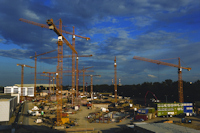 company may be looking to expand its footprint to reach a new customer population, reduce supply chain cost and/or tap into a superior labor market. These project goals ultimately translate into how the company will measure project success: Did we capture expected market share? Have supply chain costs dropped? Has employee performance, retention and cost improved at the new location? Because the purpose of the site selection process is to remove location specific barriers to success, the criteria used to evaluate candidate locations must be aligned with core project goals. For example, a project goal regarding labor market quality could be translated into measurable site criteria such as density of specific occupation types, graduates per year with a certain degree, labor cost and/or employee turnover.
company may be looking to expand its footprint to reach a new customer population, reduce supply chain cost and/or tap into a superior labor market. These project goals ultimately translate into how the company will measure project success: Did we capture expected market share? Have supply chain costs dropped? Has employee performance, retention and cost improved at the new location? Because the purpose of the site selection process is to remove location specific barriers to success, the criteria used to evaluate candidate locations must be aligned with core project goals. For example, a project goal regarding labor market quality could be translated into measurable site criteria such as density of specific occupation types, graduates per year with a certain degree, labor cost and/or employee turnover.
This begs the question: if one of the implementation goals of an expansion, relocation or consolidation will include a planet initiative, can the requirements of that initiative be translated into measureable site criteria, just as any other business goal would? In other words, are there specific location and site characteristics that could make, for example, the acquisition of LEED certification easier to achieve? To examine this question we will briefly look at the impact of site/location characteristics on LEED certification and waste stream recycling.
In order for a manufacturing company to achieve LEED certification they must be awarded a certain number of points by meeting performance goals. For example, the use of recycled content in building materials can net a company up to two points. To get a LEED silver certification a new construction or major renovation project must achieve at least 50 out of a possible 110 points. Below is a sample of LEED requirements with a discussion on how they can be addressed during the site selection process:
Site Selection: LEED criteria offer one point for the selection of a site that is free of threatened or endangered species, not within five vertical feet of an adjacent 100 year flood plain, and minimizes impact on prime farmland, wetlands and bodies of water. All of these requirements can easily be translated directly into early stage site screening criteria. For example, the site selection process could make the above criteria “fatal flaws.” A fatal flaw is a criteria where, if present, would immediately remove a candidate site from consideration. This would essentially guarantee the future project could receive the site selection point.
Brownfield Redevelopment: If a project is constructed on a brownfield location it is automatically eligible for one LEED point. Although this might not be an absolute requirement for the implementation of a LEED manufacturing project, the site screening process could weight brownfields more heavily than greenfields in order to account for the potential benefit that could be accrued towards the LEED certification process.
Optimize Energy Performance: Reduction of energy demand is one of the most important LEED criteria, offering up to 19 points. For manufacturers it can be difficult to find meaningful reduction in process energy usage. Therefore, it becomes important to find reductions in building energy usage. The site selection process can help find reductions in those categories by optimizing geographic location, site orientation and surrounding environment. For example, if cooling requirements are a significant portion of energy usage, then locating in a location with lower ambient temperatures can reduce cooling demand. At the site level, optimizing site orientation and surrounding environment (trees, existing development, etc.) can work to reduce solar loading and lessen overall energy demand.
On-site Renewable Energy: Companies can earn up to seven LEED points by generating some of their energy though onsite, renewable technology. This typically takes the form of wind, solar, geothermal or landfill gas technology; all of which are impacted by location and site characteristics. By integrating the goal of onsite power technology into the site screening process, criteria can be developed around solar potential, wind speed consistency and the ability to maintain those technologies through established renewable industry infrastructure.
Green Power: It would be difficult to meet 100 percent of energy needs through on-site production. Therefore, LEED also offers two points for the use of renewable energy purchased through a local utility. The initial site selection process can engage local utilities to determine their ability and willingness to supply the needed renewable energy.
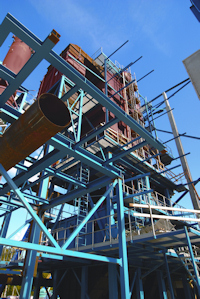 The five examples above are not the only way site selection can impact the quest for LEED certification. But they are illustrative of how integrating LEED requirements into the site selection process can help select a site with attributes that will make meeting LEED requirements easier, and therefore reduce cost. Just using the examples above, the site selection process could work to support the reception of up to 30 LEED points.
The five examples above are not the only way site selection can impact the quest for LEED certification. But they are illustrative of how integrating LEED requirements into the site selection process can help select a site with attributes that will make meeting LEED requirements easier, and therefore reduce cost. Just using the examples above, the site selection process could work to support the reception of up to 30 LEED points.
The second example of integrating planet initiatives into the site selection process is waste stream recycling. In order to develop a successful waste stream recycling program certain criteria must be met. The waste stream must be in a usable condition, it must be transportable, there must be market demand, and the cost of market delivery must be less than the payment received from customers, or the avoided cost of disposal. Two of those criteria can be addressed prior to selecting a location. An analysis of end users conducted during the site screening process will determine the location with the best customer potential. Secondly, the cost/benefit analysis will likely be dependent on transportation costs associated with moving the waste. Those costs can be modeled by location to compare costs between candidate sites.
The purpose of the above examples is to demonstrate that the goals of planet initiatives are no different than any other business goal related to expansion, relocation or consolidation projects. It is possible to translate the requirements of these initiatives into measurable criteria and utilize the site selection process to choose a location that predisposes success. In short, site selection should be considered a tool for achieving environmental sustainability goals.
What about the “People” part of Triple Bottom Line?
The second factor in TBL is people. Although people initiatives are less common than planet, social responsibility is growing in importance to both customers and corporations. In manufacturing, the people part of the equation will typically manifest itself in terms of labor market; jobs created, employee retention, training, supplier labor standards, etc. Because labor markets are a critical piece of any site selection process, it is not difficult to leverage early stage location analysis to find opportunities to implement people programs. It should be noted that most people activities a manufacturer might engage in are also good long-term labor practices, regardless of how they are labeled. A few examples are outlined below.
Creating meaningful job opportunities in a local economy with high unemployment obviously has social benefits for the area. Even better is creating job opportunities where the skills required for the new job mirror the skill sets in a trained, but out of work labor force. This strategy maximizes the social impact of entering a market because it replaces careers, not just jobs. For the manufacturer it limits the need for employee training and can provide quicker ramp up times. Although the site selection process always addresses labor market skill, if the goal to “reuse” labor talent is clearly defined, the site screening criteria would be more heavily weighted towards existing pools of available labor. There could even be a focused effort on identifying and following other plant closures.
A second powerful way to achieve social goals and improve your talent pipeline is to partner with local educational institutions to develop training 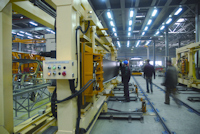 programs. The result is a platform that provides training to the regional labor market while also generating specifically trained workers for your operation. This is best achieved if the formalization of such a training program is done as part of the location decision process. Often a community/state will offer training assistance as part of an incentive package. By engaging communities and educational intuitions during the site selection phase, as oppose to the implementation phase, it is possible to leverage incentive opportunities to create a customized training initiative.
programs. The result is a platform that provides training to the regional labor market while also generating specifically trained workers for your operation. This is best achieved if the formalization of such a training program is done as part of the location decision process. Often a community/state will offer training assistance as part of an incentive package. By engaging communities and educational intuitions during the site selection phase, as oppose to the implementation phase, it is possible to leverage incentive opportunities to create a customized training initiative.
The potential linkages between labor, social responsibility and site selection go far beyond the two mentioned above. Again, if such programs are part of long-term project goals, they can, and should, influence the site selection process and screening criteria.
Achieving Planet and People Goals with a Focus on Profit
It should be said again: the purpose of integrating TBL into the site selection process is to achieve sustainability goals in manner that is more efficient and cost effective. However, integrating TBL initiatives into the site selection process can also help account for the potential cost savings of the initiatives themselves; ensuring the link between sustainability and profit remains explicit.
Any good site selection process ends with the creation of an operational cost model. The cost model would take the finalist locations and calculate a “cost of doing business” inclusive of labor, utilities, transportation, taxes, etc. At this point, the cost savings of the planned TBL initiatives can be compared to a geographically specific baseline, thus providing full visibility into the return on investment of TBL initiatives by location. Ultimately, the ability to link sustainability to profit becomes one of the decision criteria in the site selection.
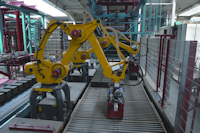 The profit component of TBL can also be viewed as a commitment to a sustainable profit margin through long-term planning. This view also has impacts on how site selection should be executed. Specifically, there are elements of a site selection model that often default to a short-term view of cost avoidance, as opposed to a long-term outlook. For example, it is common for companies to favor short-term tax credits or cash incentives as opposed to more programmatic incentives like customized training. In order to truly make an informed decision on which program most benefits your company, it is necessary to examine the long-term cost avoidance associated with higher productivity and superior employee retention against short-term tax credits. These are items that should be incorporated into a comprehensive operational cost model and are best examined during the final phase of site selection.
The profit component of TBL can also be viewed as a commitment to a sustainable profit margin through long-term planning. This view also has impacts on how site selection should be executed. Specifically, there are elements of a site selection model that often default to a short-term view of cost avoidance, as opposed to a long-term outlook. For example, it is common for companies to favor short-term tax credits or cash incentives as opposed to more programmatic incentives like customized training. In order to truly make an informed decision on which program most benefits your company, it is necessary to examine the long-term cost avoidance associated with higher productivity and superior employee retention against short-term tax credits. These are items that should be incorporated into a comprehensive operational cost model and are best examined during the final phase of site selection.
What’s the Take-Away?
Sustainability initiatives are here to stay. As a private company with a focus on bottom line the impact of those initiatives have to outweigh costs. TBL reporting offers the ability to integrate that reality into your decision making process. Furthermore, not only should sustainability initiatives be linked to the bottom line, but they should be implemented and carried out in as cost effective manner as possible. The purpose of this article was to demonstrate that the integration of TBL initiatives into the site selection process can result in a real estate decision that helps you reach your sustainability goals. Elevating TBL goals to the level of other business goals will ensure your future manufacturing site is a part of the sustainability solution and not a hurdle.

